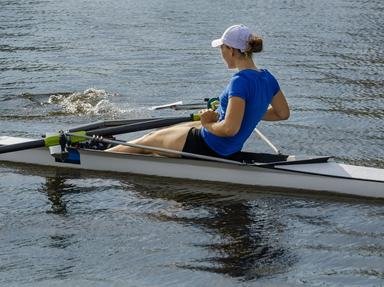Quiz Answer Key and Fun Facts
1. Whitewatering is classified according to a numerical system. Which of the following is true?
2. Which of the following is true about classifying whitewater?
3. Water flow is measured in "CFS". What does this stand for?
4. What is the "wavetrain"?
5. What is a "hole" in whitewatering?
6. What does it mean to "eddy out"?
7. What are "strainers and sweepers"?
8. You are paddling down a river that has a tree fallen across it, but there is a gap of a few feet between the surface of the water and the tree trunk. What should you do?
9. You have capsized in whitewater! What do you do?!
10. Which of these is not a real whitewater paddling stroke?
Source: Author
Powderwhite
This quiz was reviewed by FunTrivia editor
Nightmare before going online.
Any errors found in FunTrivia content are routinely corrected through our feedback system.

